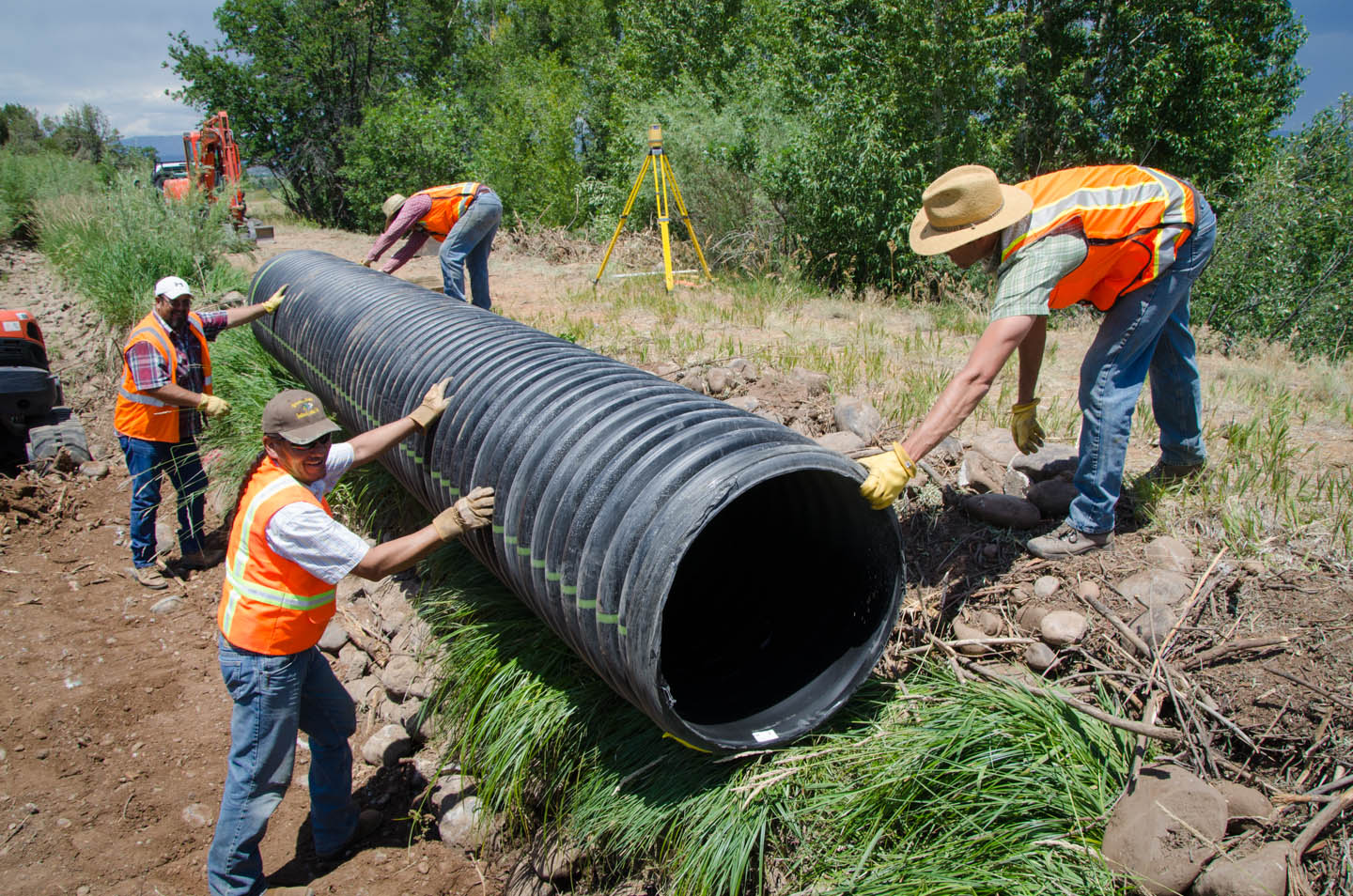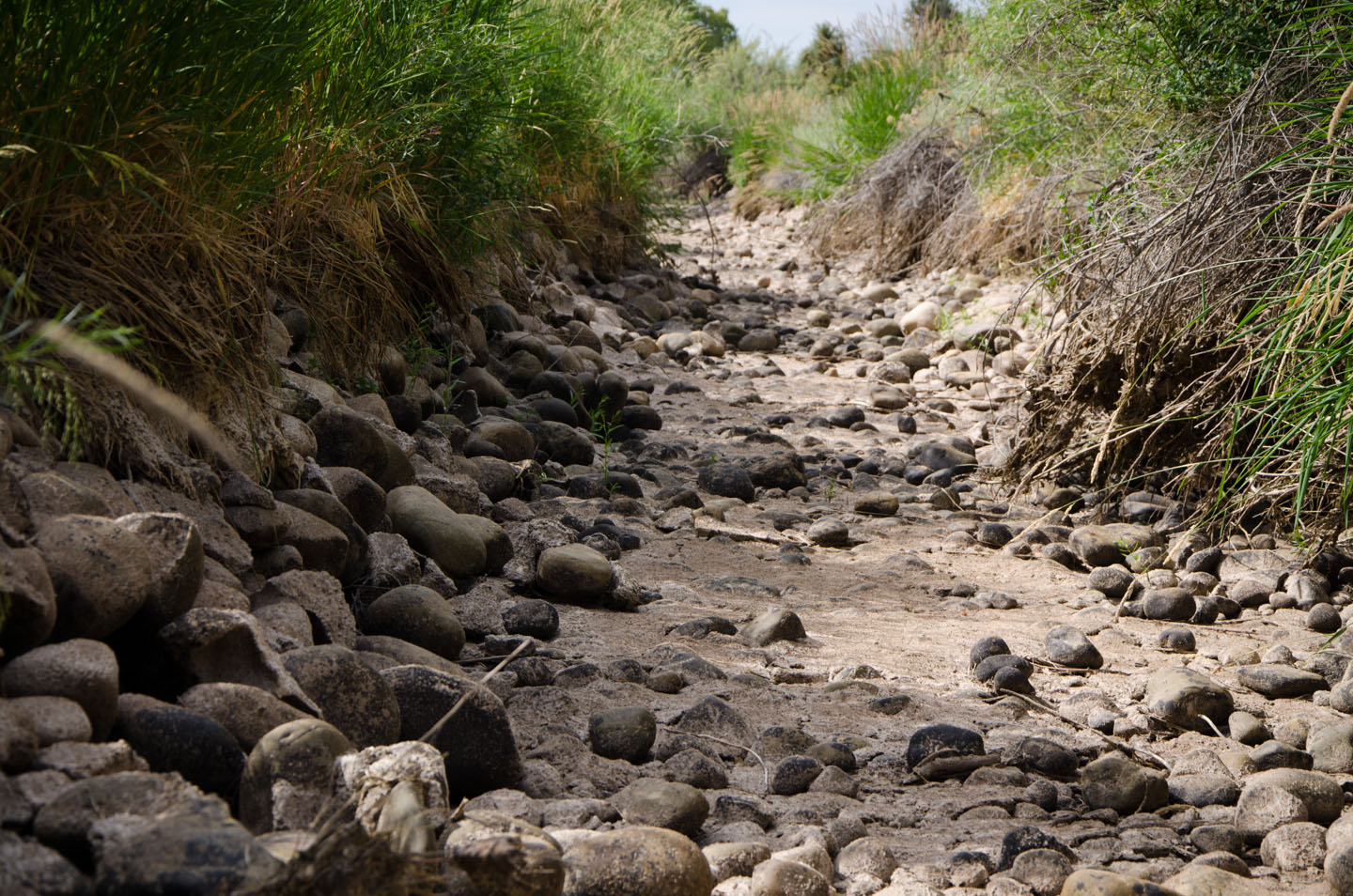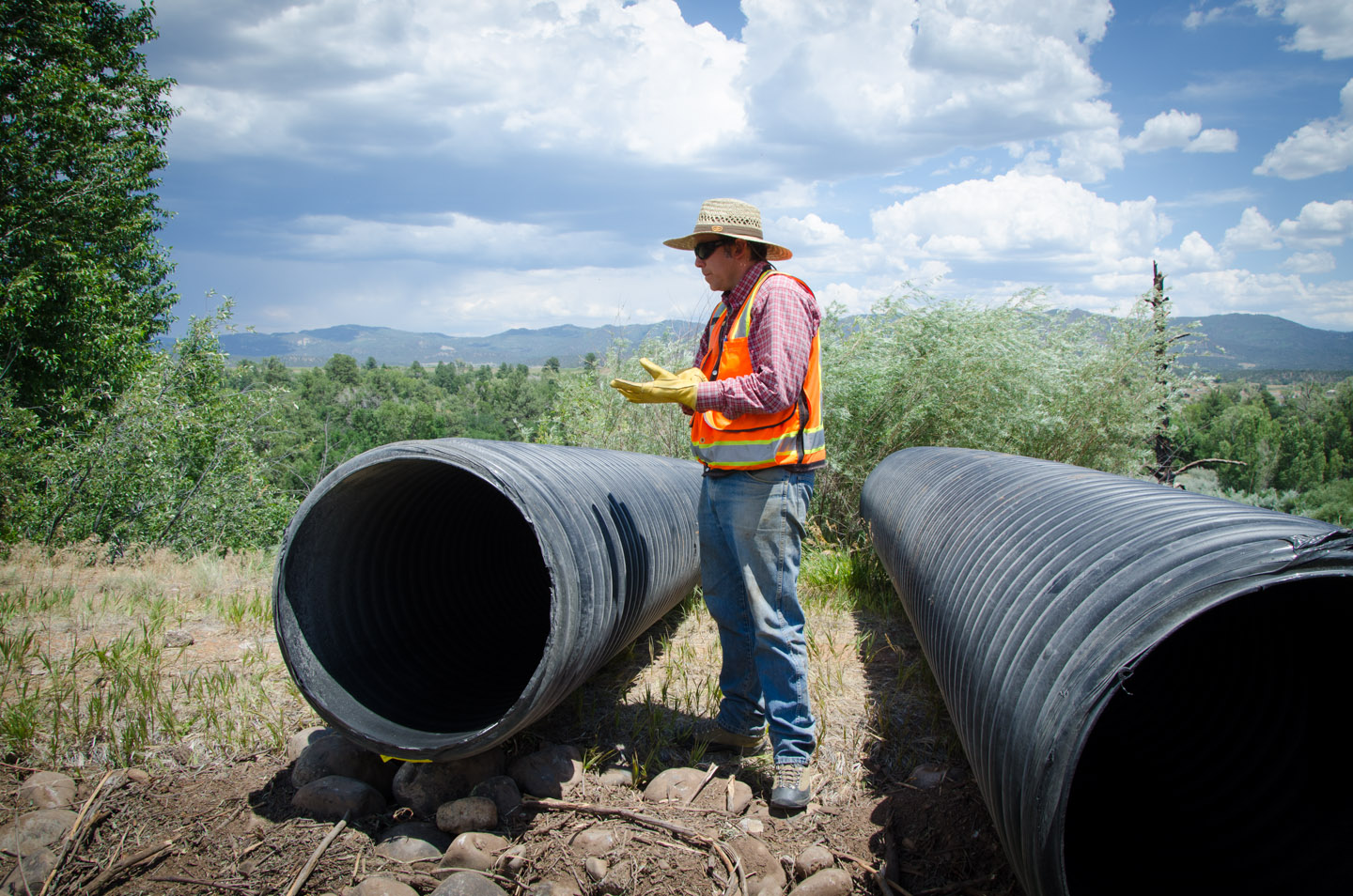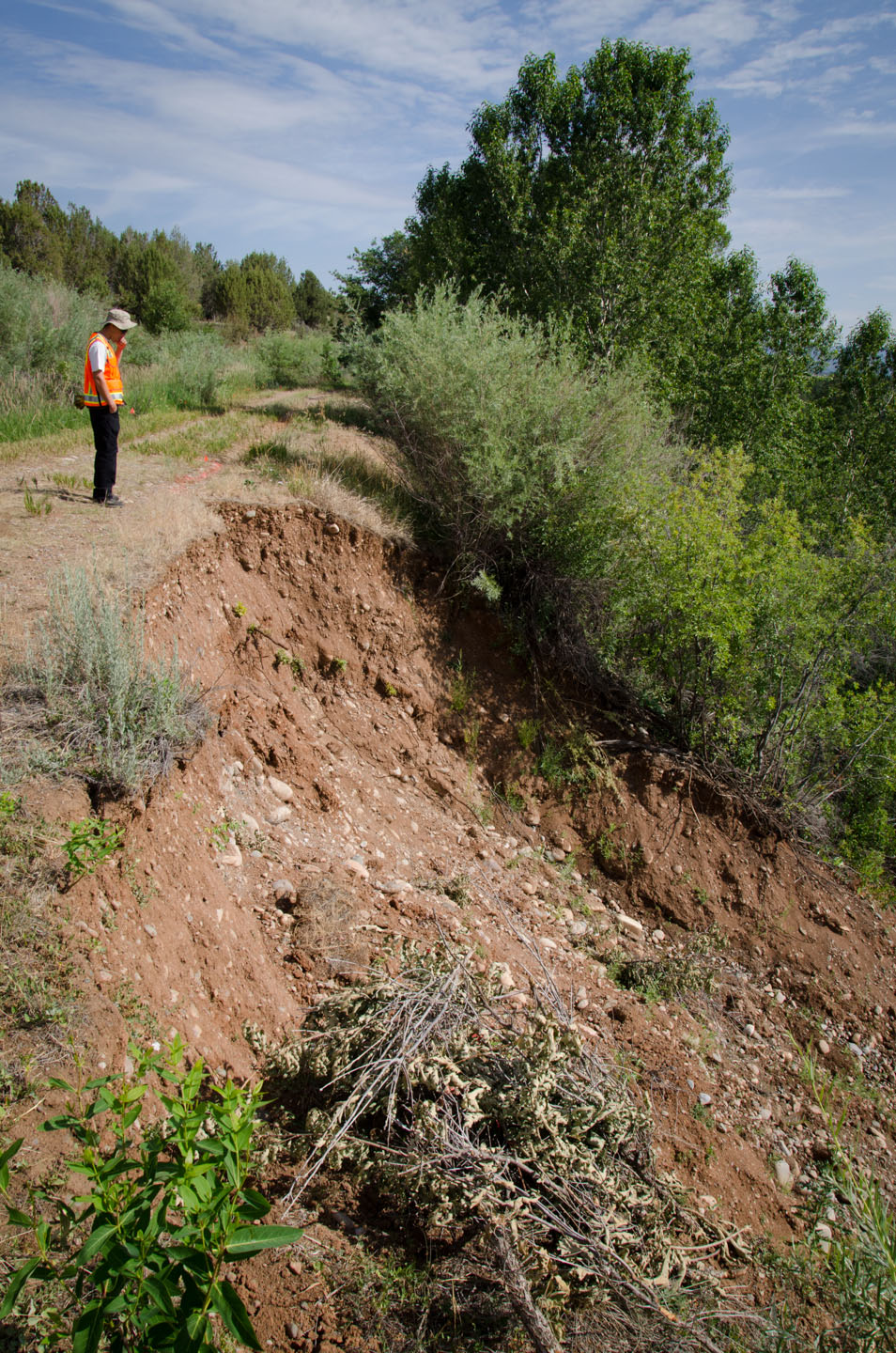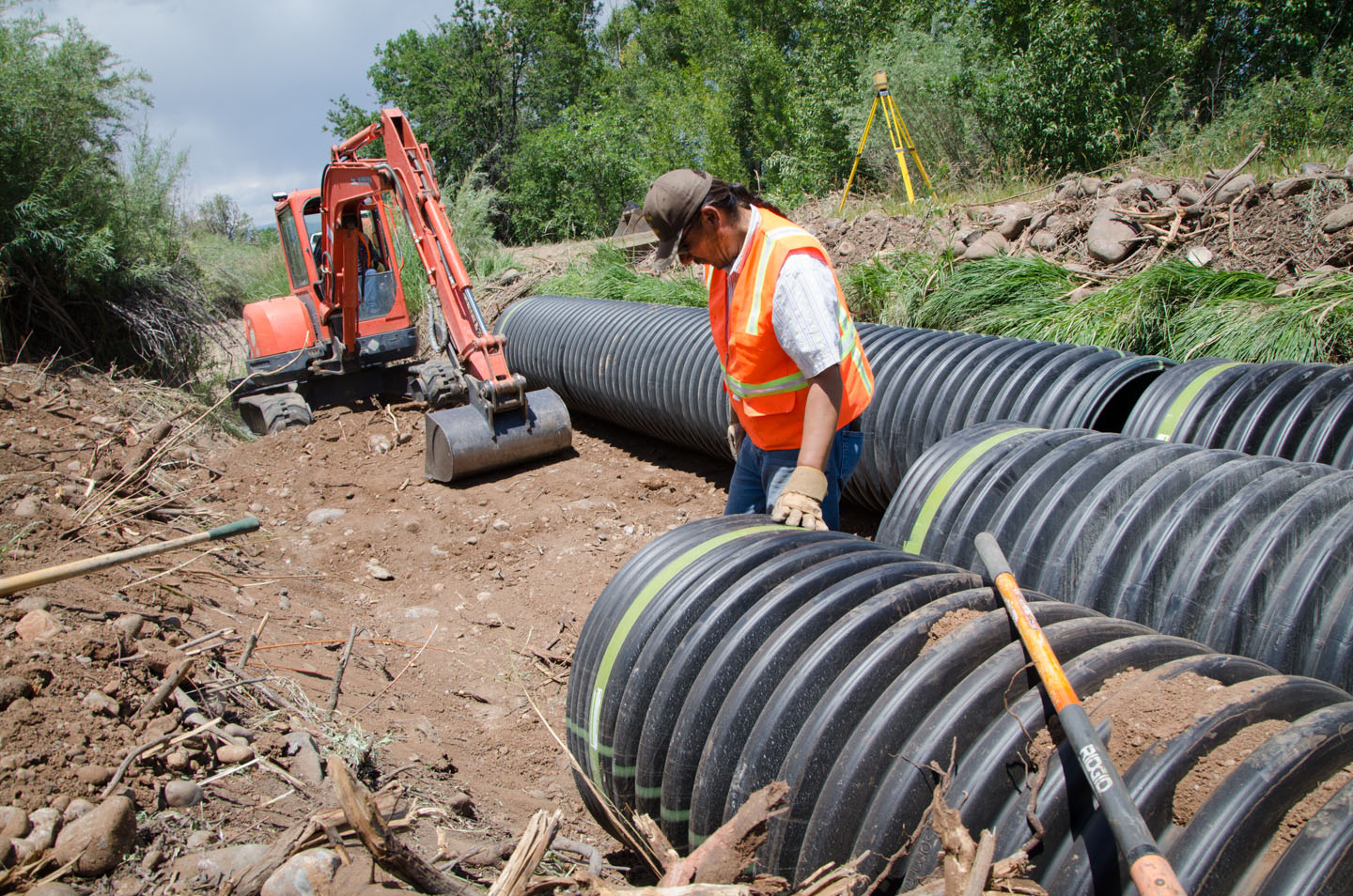As of press time, the emergency stabilization of the Dr. Morrison Canal on the Pine River Indian Irrigation Project was 90 percent complete.
The emergency was created by a slope failure that caused a 150-foot landslide. It was expected that irrigation water could be turned back on Thursday after being shut off for two weeks.
The stabilization project was a joint effort by the Southern Ute Indian Tribe and the U.S. Bureau of Indian Affairs. It was only accomplished with close cooperation involving the Tribal Council, the Executive Office, the Department of Natural Resources’ Water Resources and Range divisions, the Energy Department, BIA Irrigation, BIA Forestry, the Legal Department, the TERO Office, tribal assignees, and members of the local non-Indian community.
The project was a demonstration of what can be accomplished when a community pulls together. It included the installation of three 120-foot sections of 30-inch-diameter pipes that will bridge the slide area.
The serious nature of the landslide means the fix is not a permanent solution, so the tribe and BIA will continue to work on a long-term fix, said Chuck Lawler, Water Resources Division head.
The urgency of having to shut off water at the height of the irrigation season, in the middle of a drought, highlights what a critical resource water is to both the tribe and the non-Indian community, he said. It also highlights the challenges of maintaining irrigation infrastructure that is often more than 100 years old.
“Now, if we can just get some rain,” he said.

